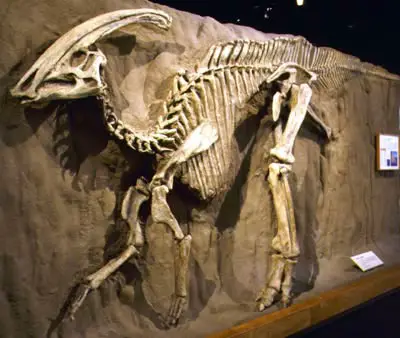In the “Galatians: Genesis” sermon series 19 years ago, Pastor
Wind mentioned that Genesis is the most accurate account of the Earth’s history
over these few thousand years and the origin of human. Both the events and time
recorded in the book are absolutely accurate and perfectly match scientific and
archaeological findings.
Humans and all creatures on earth were not accidentally formed by evolution over billions of years as claimed by the evolutionist scientists and biologists. On the contrary, based on Genesis, God created all creatures in these six thousand years within seven days. This perfectly aligns with scientific and archaeological findings.
Humans and all creatures on earth were not accidentally formed by evolution over billions of years as claimed by the evolutionist scientists and biologists. On the contrary, based on Genesis, God created all creatures in these six thousand years within seven days. This perfectly aligns with scientific and archaeological findings.
Therefore, evolutionist scientists and biologists claimed
that all dinosaurs became extinct sixty-five million years ago and humans had
never met them. In fact, it’s absolutely wrong! In history, humans had lived
with dinosaurs until Noah’s floods when all dinosaurs nearly became extinct.
The Old Testament also mentioned about dinosaurs many times.
However, former bible translators had not yet known about dinosaurs or that the
creatures mentioned in the bible were different species of dinosaurs. For
example, Job has mentioned about dinosaurs.
Job 41: 12-22
12 “I will not
fail to speak of his limbs, his strength and his graceful form.
13 Who can strip off his outer coat? Who would approach him with a bridle?
13 Who can strip off his outer coat? Who would approach him with a bridle?
14 Who dares open
the doors of his mouth, ringed about with his fearsome teeth?
15 His back has
rows of shields tightly sealed together;
16 each is so
close to the next that no air can pass between.
17 They are joined
fast to one another; they cling together and cannot be parted.
18 His snorting
throws out flashes of light; his eyes are like the rays of dawn.
19 Firebrands stream
from his mouth; sparks of fire shoot out.
20 Smoke pours
from his nostrils as from a boiling pot over a fire of reeds.
21 His breath
sets coals ablaze, and flames dart from his mouth.
22 Strength
resides in his neck; dismay goes before him.
Bible translators referred the creatures as crocodiles. But obviously the two animals are
totally unrelated.
For example, verse 13 says that nobody can “strip off his
outer coat” or “approach him with a bridle”. This doesn’t apply to crocodiles
as many people have already done that in performance. Verses 18 to 21 describe
that the creature can spew flames from his mouth and nostrils. But crocodiles
can’t.
Then, creationist scientists found that there’s once a genus
of dinosaurs living on earth that may project jets of fire from their mouths
and noses.
This type of dinosaur is called Parasaurolophus. It had a
long and hollow cranial crest on its head connecting the nostrils.
Parasaurolophus produced methane in digestion, stored it in
the hollow cranial crest and projected jets of methane at enemies. At its
projection, the flammable methane upon contact with other chemicals will
produce flame without hurting the Parasaurolophus itself.
Today’s bombardier beetle expels explosive
chemicals to attack enemies in the same way.
Most probably, Parasaurolophus is the real identity of the fire-spewing
dragon stated in Job and other historical records.


thank you for sharing!
ReplyDeletethanks for sharing abt the dinosaurs history....
ReplyDeleteThanks for sharing!
ReplyDeleteWOO~~~~so interesting~!
ReplyDeleteMany thanks for your information,
ReplyDeleteI feel interest about Dinosaurs ~
thz for sharing about the dinosaurs history
ReplyDeleteit is so interesting that the Bible has make mention of the dinosaurs history
it shows that the Bible is real!
wow....dinosaurs
ReplyDeletethanks for telling us the truth
ReplyDeletebible mentioned dinosaurs thousand years ago.
ReplyDeletethanks for sharing !
bible mentioned dinosaurs thousand years ago.
ReplyDeletethanks for sharing !
sorry, but i highly doubt that Leviathan was a Parasaurolophus... in the verse God asks "Can you pull in Leviathan with a fishhook or tie down its tongue with a rope?" <---- this implies that the creature spent it's time in the sea... the description seems to fit that of the Chinese dragon (i'm not exactly sure which dinosaur it was)
ReplyDelete